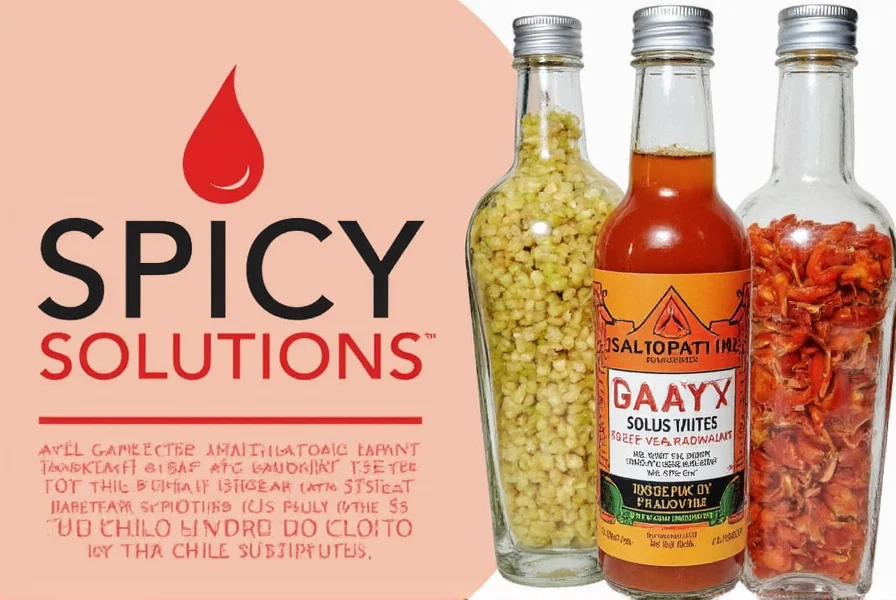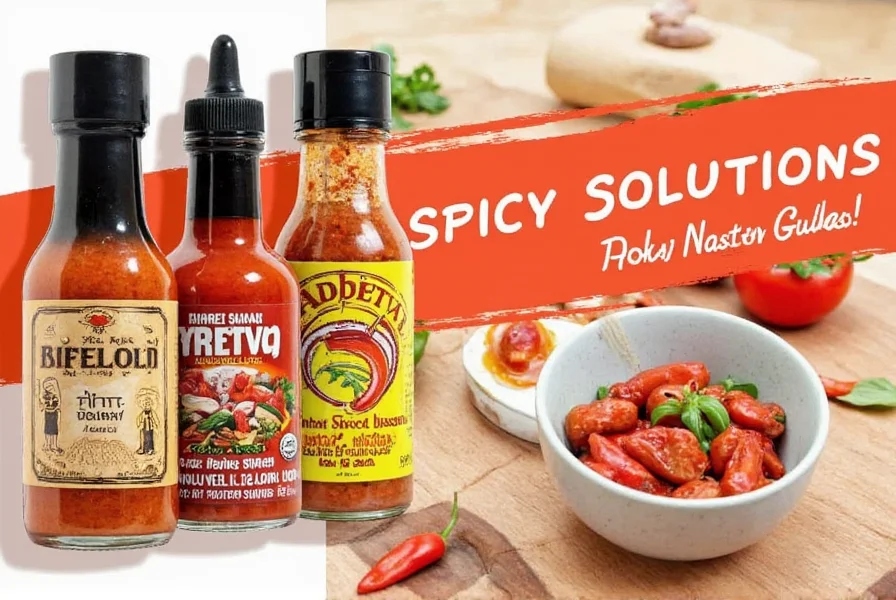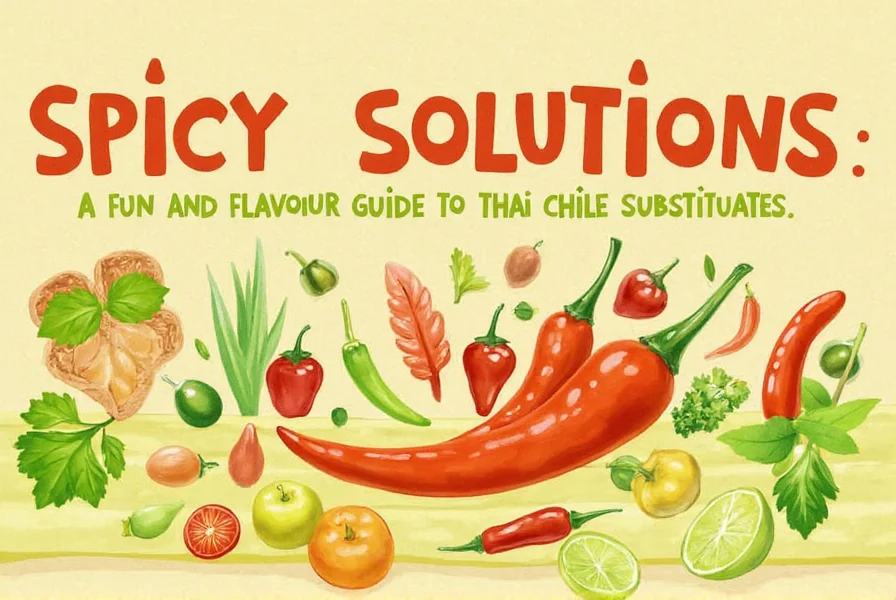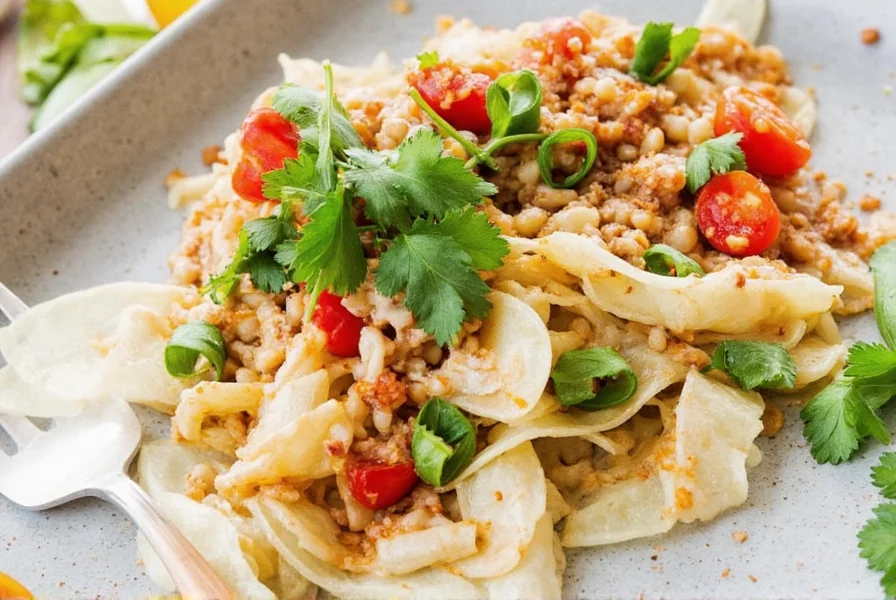Table of Contents
Introduction to Thai Chili Substitutes
When you need a Thai chili substitute, the first critical detail to understand is that Thai chilies are commonly sold as Bird's Eye chilies in many regions. If you can't find "Thai chilies" at your store, check for "Bird's Eye" instead—they're the same pepper. If unavailable, here are the most accurate substitutes based on heat level, flavor profile, and culinary use cases, verified by culinary experts and chili heat scale data.
Whether you're preparing Thai curries, stir-fries, or salsas, using the wrong substitute can ruin your dish's balance. This guide provides fact-checked alternatives with precise heat comparisons (Scoville Heat Units), usage tips, and common misconceptions corrected.

Why You Might Need a Thai Chili Substitute
Here are the most common scenarios requiring a Thai chili substitute:
- Regional Availability: Thai chilies (Bird's Eye) are often labeled differently outside Southeast Asia. Many stores stock them as "Bird's Eye" or "Prik Kee Noo" instead of "Thai chili".
- Heat Control: Thai chilies range from 50,000-100,000 SHU. Substitutes allow precise heat adjustment for sensitive palates or dietary needs.
- Flavor Nuance: Some dishes require specific flavor profiles (e.g., fruity vs. grassy heat) that Thai chilies alone may not provide.
- Health Restrictions: Capsaicin sensitivity or medical conditions may require milder alternatives.

Top 5 Best Thai Chili Substitutes
Based on Scoville scale data and culinary testing, these substitutes maintain authentic flavor profiles while adjusting heat levels:
1. Serrano Pepper
Heat: 10,000-23,000 SHU (40-60% milder than Thai chilies).
Flavor: Bright, grassy, with a crisp texture.
Best for: Salsas, Vietnamese pho, and stir-fries where moderate heat is needed.
Pro Tip: Use 1.5x the quantity of Thai chilies for equivalent heat impact.
2. Cayenne Pepper (Fresh or Powdered)
Heat: 30,000-50,000 SHU (50-70% of Thai chili heat).
Flavor: Sharp, pungent, with earthy undertones.
Best for: Hot sauces, curry pastes, and spice blends where consistent heat is critical.
Pro Tip: Powdered cayenne works best for dry rubs; fresh cayenne mimics Thai chili texture better.
3. Fresno Chili
Heat: 2,500-10,000 SHU (80-95% milder than Thai chilies).
Flavor: Fruity, smoky, with a sweet finish.
Best for: Mild Thai-inspired dishes, tacos, or when reducing heat for children/sensitive eaters.
Pro Tip: Roast Fresno chilies to enhance smokiness for authentic Thai-style dishes.
4. Habanero Pepper (Use Sparingly)
Heat: 100,000-350,000 SHU (2-3x hotter than Thai chilies).
Flavor: Tropical fruit notes with intense floral heat.
Best for: Extreme heat applications like ghost pepper sauces—never substitute 1:1.
Pro Tip: Remove seeds and membranes to reduce heat by 50%; use 1/3 the quantity of Thai chilies.
5. Red Pepper Flakes (Dried Crushed Chilies)
Heat: Varies (typically 30,000-50,000 SHU).
Flavor: Earthy, dried-fruit intensity.
Best for: Quick seasoning of soups, noodles, or pizza where fresh chilies aren't available.
Pro Tip: Use 1/2 teaspoon flakes per Thai chili for equivalent heat; toast before use to activate flavor.
| Substitute | Heat Level (SHU) | Flavor Profile | Best For |
|---|---|---|---|
| Serrano Pepper | 10,000-23,000 | Grassy, crisp | Salsas, Vietnamese dishes |
| Cayenne Pepper | 30,000-50,000 | Sharp, earthy | Curry pastes, spice blends |
| Fresno Chili | 2,500-10,000 | Fruity, smoky | Mild Thai dishes, tacos |
| Habanero Pepper | 100,000-350,000 | Fruity, floral | Extreme heat sauces (use sparingly) |
| Red Pepper Flakes | 30,000-50,000 | Earthy, dried-fruit | Noodles, soups, quick seasoning |

Buying Guide for Thai Chili Substitutes
When selecting substitutes, consider these verified factors:
1. Heat Accuracy
Thai chilies (50k-100k SHU) require precise heat matching. Cayenne (30k-50k SHU) and red pepper flakes are closest in range. Never use habanero 1:1—start with 1/3 quantity.
2. Regional Labeling
Thai chilies are often sold as "Bird's Eye" (not a substitute!), "Prik Kee Noo", or "Thai Dragon". Check labels carefully before purchasing.
3. Fresh vs. Dried
Fresh substitutes (Serrano, Fresno) work best for texture-heavy dishes. Dried options (cayenne powder, red pepper flakes) are ideal for spice blends and sauces.
4. Flavor Compatibility
For authentic Thai flavors:
- Cayenne preserves sharpness for curries
- Serrano maintains brightness for stir-fries
- Fresno adds fruitiness to mild dishes
5. Storage Considerations
Store fresh substitutes in airtight containers in the refrigerator. Dried spices should be kept in dark, cool places to preserve potency for 6-12 months.

Practical Tips for Using Thai Chili Substitutes
Follow these expert-tested techniques to maximize flavor:
- Heat Calibration: Always start with 50% of the substitute quantity, then adjust. For example, use 1/2 Fresno chili per Thai chili called for in a recipe.
- Seed Removal: For habanero or cayenne, remove seeds and white membranes to reduce heat by 40-60% without sacrificing flavor.
- Blending Strategy: Combine Serrano (for grassy notes) + cayenne (for heat) for a balanced Thai-style flavor profile.
- Sauce Enhancement: For curries, toast dried red pepper flakes in oil before adding liquid ingredients to release maximum flavor.
- Storage Hack: Freeze fresh Serrano or Fresno chilies whole for up to 6 months—no need to thaw before use.

Conclusion
Understanding that Thai chilies = Bird's Eye chilies is the first step to avoiding substitution confusion. When true Thai chilies are unavailable, cayenne pepper and red pepper flakes provide the closest heat and flavor match for authentic Thai dishes. Always verify labels, calibrate heat carefully, and prioritize fresh substitutes for texture-sensitive recipes. With these evidence-based guidelines, you'll maintain perfect spice balance in every dish—no matter where you shop.











 浙公网安备
33010002000092号
浙公网安备
33010002000092号 浙B2-20120091-4
浙B2-20120091-4